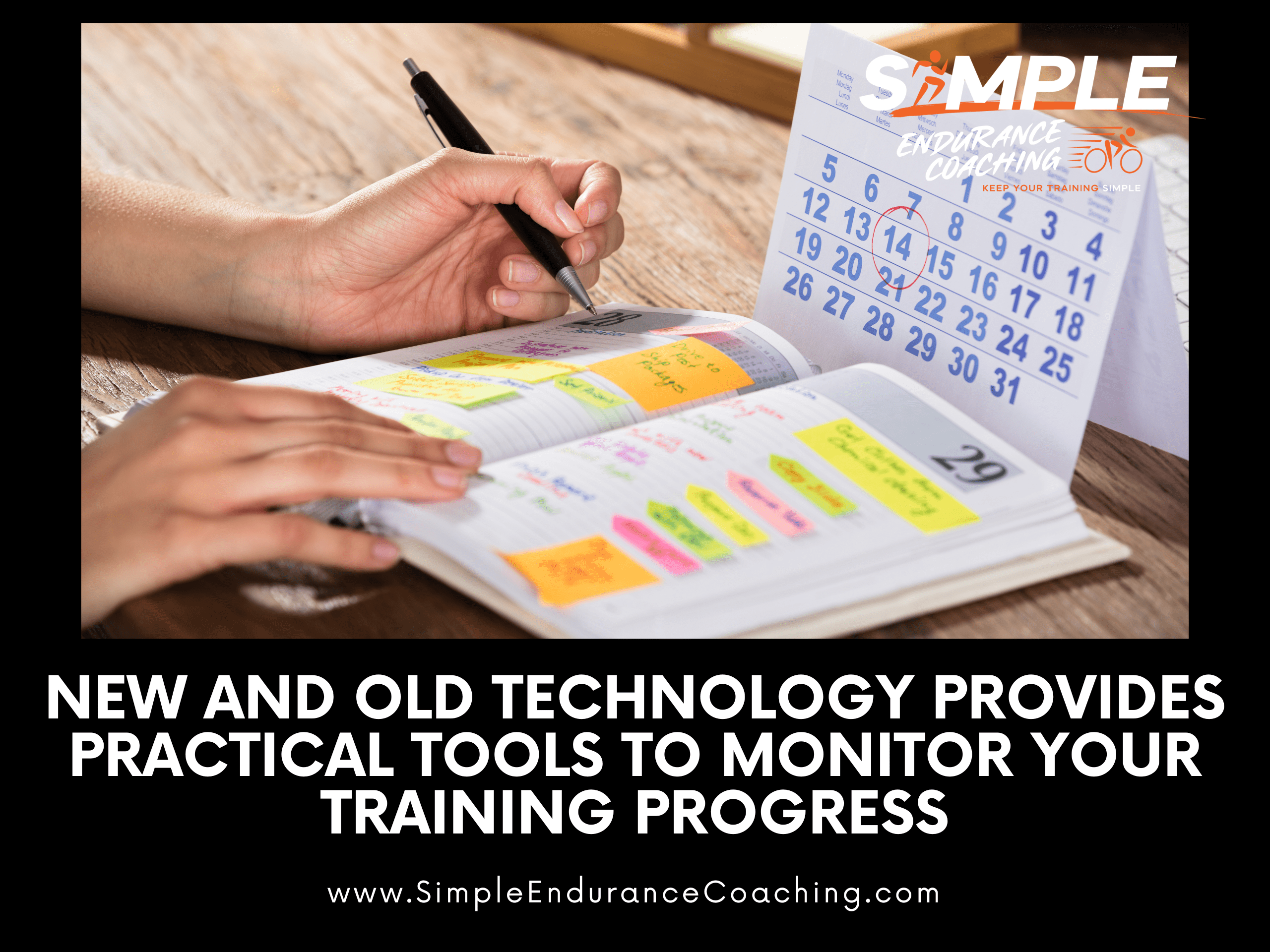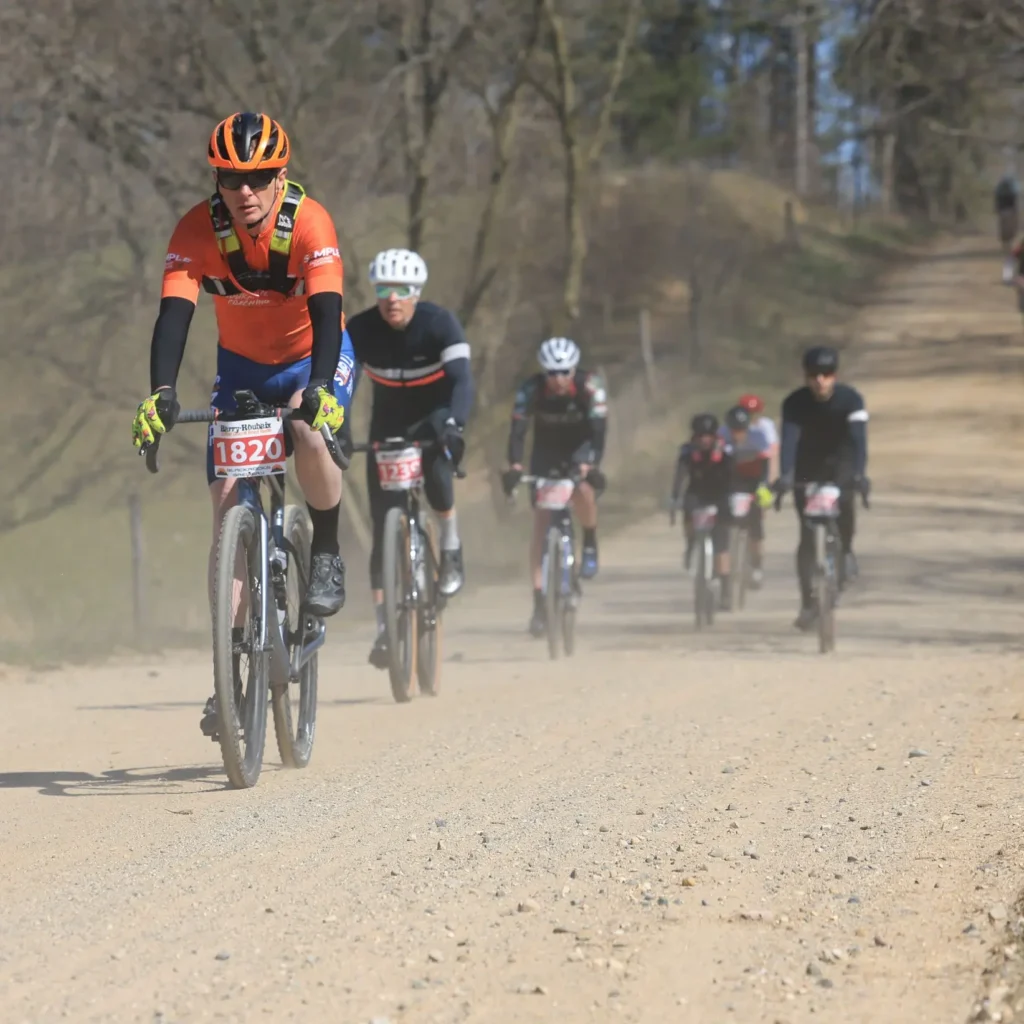Monitor Training Progress: Practical Tools and Technology
What is the best way to track training progress to know if your training is actually working?
When I was a middle school teacher, it was always critical for me to keep track of data, measure my students’ progress.
How else would I know if they were actually learning what I was teaching?
We need the same thinking to measure our progress if we want to improve our fitness.
If you measure your workouts, you learn what works.
The data you measure doesn’t lie. It isn’t subjective.
Monitor your data to help you track training progress, lack of progress, and even when to take time off!
The data you measure keeps you honest and focused on your goal.

Heart Rate Monitor
When it comes to tracking endurance training progress, a heart rate monitor can be an invaluable tool.
These monitors measure your heart rate in real-time during exercise and give you insights into the intensity of your workouts.
One advantage of using a heart rate monitor is that it allows you to train in specific target heart rate zones.
This means that you can optimize your training by working at the correct intensity levels.
Another advantage is being able to track changes over time.
By monitoring how quickly your heart recovers after exercise, you can gauge improvements in cardiovascular fitness and overall health.
Heart rate monitors can react to lack of sleep, fatigue
Heart rate monitors are particularly helpful for longer-duration activities like cycling and running where maintaining steady effort levels is crucial for success.
With a monitor, athletes can ensure they’re staying within their desired range even when fatigue sets in towards the end of long workouts.
This means that the same effort at the end of a long ride or run can cause a higher heart rate due to fatigue.
Heart rate, though, can also be finicky based on caffeine and previous sleep, for example.
Power Meter
One of the most effective ways to track endurance training progress on the bike is by using a power meter.
This device measures your power output in watts, providing you with accurate data on how hard you are working during your rides or runs.
By tracking changes in their average wattage over time, they can see if they are becoming more efficient and powerful riders.
Running power meters aren’t quite there yet
Furthermore, a power meter provides objective data on fitness gains that may not be as easily quantifiable otherwise.
It allows athletes to monitor improvements in performance and make adjustments to their training accordingly.
Runners are starting to be able to use shoe-based power meters, which provide some valuable data.
However, the data isn’t exact and the technology doesn’t seem quite ready for prime time.
Smart watch with heart rate helps you monitor training
One of the most convenient ways to track your endurance training progress is by using a smart watch.
This device allows you to monitor important metrics during your workout, such as distance traveled, pace, and elevation gain.
With a smart watch, you can analyze your performance over time and make adjustments to improve your results.
For example, you can use the timer and heart rate to analyze your fitness during running intervals.
Additionally, many modern GPS watches come with additional features like heart rate monitoring and sleep tracking.
These tools provide even more data points for analyzing how well-rounded your endurance training routine truly is.
Training Logs help you with monitoring your training
When it comes to tracking endurance training progress, keeping a training log is one of the oldest and most effective ways.
A well-kept training log can give you an overall view of your performance over time and help identify patterns or areas where you need improvement.
To start, consider recording basic information such as date, activity type (cycling, running), duration, and distance covered.
Remember to include how you felt in training logs
You may also want to include other relevant details like your average heart rate during the session or how you felt before and after the workout.
Keeping notes on what worked well for each workout is really helpful in identifying trends in your progress – and it helps your coach understand how you’re feeling!
Did you feel strong throughout? Or did fatigue set in early?
This information will help guide future sessions by honing in on weaknesses that need attention.
Additionally, having a written record of past workouts can provide motivation when looking back at previous accomplishments.
It’s easy to lose track of small gains made over time without documentation; seeing these improvements laid out clearly can reinforce positive habits while inspiring new goals going forward.
Measure workout progress through an app
MyFitness Pal, Garmin, and other tools offer different ways to help you record your training.
Plus numerous sites are now offering Artificial Intelligence (AI) tools to help you with your training.
For example, Trainer Road uses an AI algorithm to update your Functional Threshold Power (FTP) without doing the tests.
I use Training Peaks with all of my cycling and running coaching clients as well.
There are a million billion different apps you can use.
Be mindful, though, that no app is going to be the golden ticket: each can contribute some information.
AI is going to help us get closer to fully understanding what’s happening in our body in response to training.
Three things to consider about monitor training
- Set goals to achieve your target events.
- Measure and write down everything.
- Test yourself regularly.
Want to know more about what you can achieve?
If you liked this article, please share it with others.
Do you have questions? Email me at paulw at SimpleEnduranceCoaching.com
I support a limited number of cyclists and runners achieve their goals with more strength, endurance, and mobility.
Contact me or sign up for Virtual Coffee so we can discuss your goals, ask questions, and talk about making your endurance training more effective, fun, and Simple.
You can also opt-in to receive my weekly blog posts about what works in endurance sports.
Paul Warloski is a:
- USA Cycling Level 3 Coach
- RRCA Running Coach
- Training Peaks Level 2 Coach
- RYT-200 Yoga Instructor
- Certified Personal Trainer





